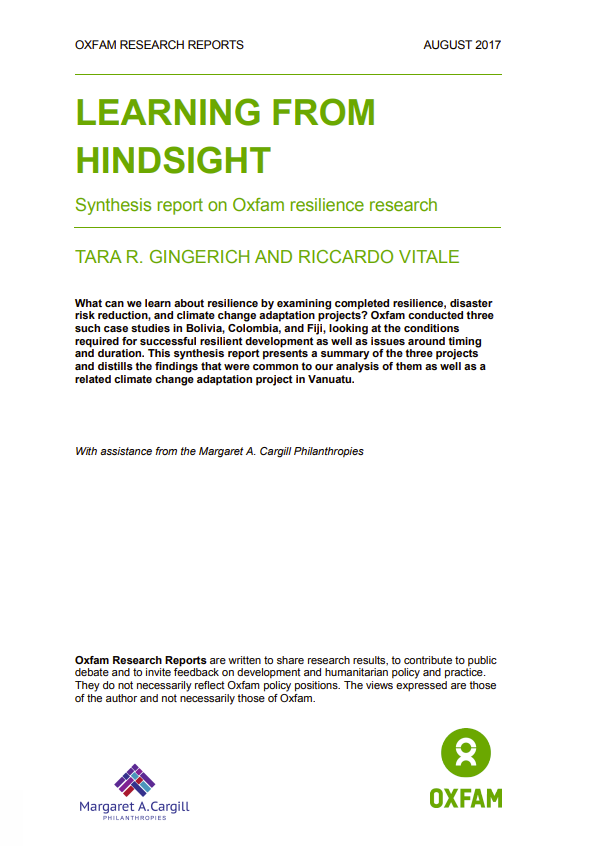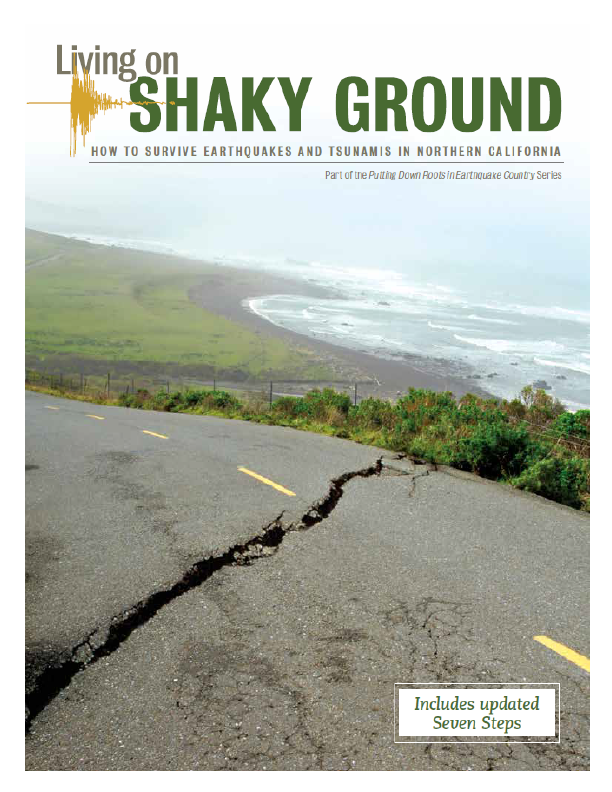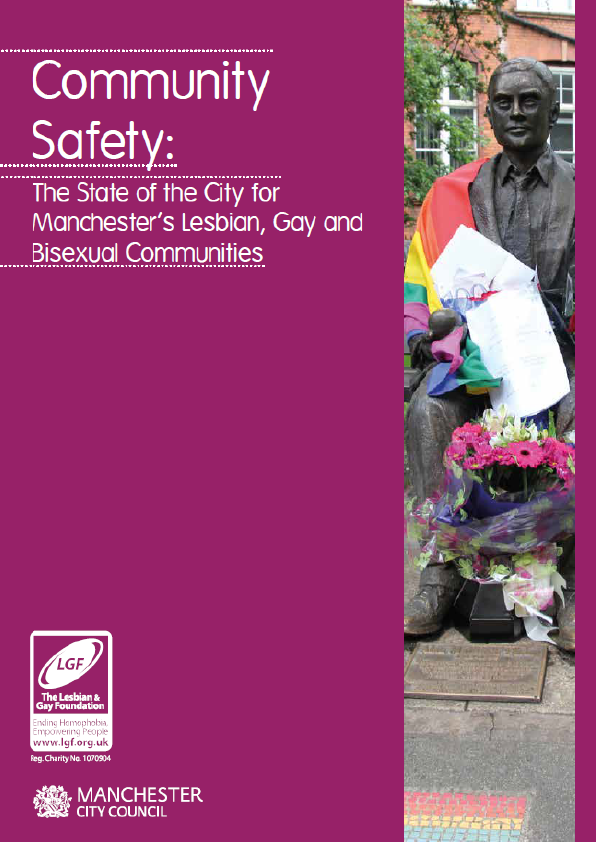What can we learn about resilience by examining completed resilience, disaster risk reduction, and climate change adaptation projects? Oxfam conducted three such case studies in Bolivia, Colombia, and Fiji, looking at the conditions required for successful resilient development as well as issues around timing and duration.
This synthesis report presents a summary of the three projects and distills the findings that were common to our analysis of them as well as a related climate change adaptation project in Vanuatu.
This report is part of a series that seeks to draw lessons from resilience projects in Latin America and the Pacific. Follow the links below to the other papers in the series:
- Addressing Water Shortages: A catalyst for more resilient development in Fiji
- Building Resilience Through Iterative Processes: Mainstreaming ancestral knowledge, social movements and the making of sustainable programming in Bolivia
- “Disaster is Nature Telling Us How to Live Resiliently”: Indigenous disaster risk reduction, organizing, and spirituality in Tierradentro, Colombia
This research was conducted with the support of the Margaret A. Cargill Philanthropies.
Oxfam defines resilience as “the ability of women and men to realize their rights and improve their well-being despite shocks, stresses, and uncertainty” (Jeans et al., 2016, 6). Although the field of development has been implementing programs that contain the elements of resilience for decades, there is still much learning to be done (Webb, 2017). Through this research project, which is part of a much larger program in Central America and the Pacific implementing resilient development programming, Oxfam has sought to learn with the advantage of hindsight, examining projects completed a few years earlier, so that the “dust has settled” and the sustainability is apparent. Since funding in the area of resilience is still fairly recent, however, it is difficult to find programs that were framed as resilience projects and ended five years ago, so we decided to expand the research to disaster risk reduction (DRR) and climate change adaptation (CCA) programs.
Disaster risk reduction (DRR) is a systematic approach to identifying, assessing and reducing the risks of disaster. It aims to reduce socio-economic vulnerabilities to disaster as well as dealing with the environmental and other hazards that trigger them. Climate change adaptation is the process of adjusting to current or expected effects of climate change. It is one of the ways to respond to climate change, along with mitigation.
In this research we have sought to gather evidence about the impact of these projects on households and communities; the elements of such projects that make them more likely to succeed; ways of defining and measuring “success” in resilience projects; and the timeline, timing, and duration of resilience projects. Our selected case studies are as follows:
• A 2007–09 preparedness project funded by the Disaster Preparedness European Community Humanitarian Office (DIPECHO) and implemented by the French Red Cross and Colombian Red Cross around the Nevado del Huila volcano in Colombia;
• A resilience project implemented by the Secretariat of the Pacific Regional Environment Programme (SPREP) in Fiji in 2002–05; and
• An Oxfam landslide preparedness project implemented in La Paz, Bolivia, in 2010–11.
The research is not an evaluation of the specific projects by any means, but a comparative research exercise to learn as much as we can from them about resilience, in order to inform future programming by Oxfam and other implementers. The learning from the research will also be applied to Oxfam’s resilience framework and approach to programming. Given the geographic focus of the larger resilience program of which this research project is part, we sought DRR, CCA, and resilience projects in Latin America and the Pacific that were thought to have created resilience to multiple hazards.
This synthesis report presents the common findings across the three case studies, together with relevant findings from a related Oxfam research project that evaluates a concluded CCA program implemented by CARE in Vanuatu (Ensor, 2017). Separately, we are publishing research reports on each of the three case studies.
Although the projects varied widely in the nature of the targeted communities, their focus, their implementation, and their impact, certain findings appear consistent when the projects are examined through a resilience lens. A few findings are equally applicable to all development and humanitarian projects:
1. Women face different challenges from men in their everyday lives and in humanitarian crisis settings. As a result, their unique vulnerabilities, capacities, and rights must be considered when designing and implementing resilience interventions. We saw this in the case studies in Colombia and Fiji.
2. It is critical to seek the input of, and listen to, a wide cross-section of targeted communities, including the most vulnerable, who are often the hardest voices to obtain. We saw this, again, in Colombia and Fiji.
3. Particularly important with outside-led interventions is the relationship with the communities. Such relationship building requires trust and respect. Our research showed that trust and respect can begin growing through small steps, such as the honoring of traditions about approaching a community and requesting permission from the village elder to conduct research or programming in the community. In the longer term, trust and respect require close attention to the voices of the community.











